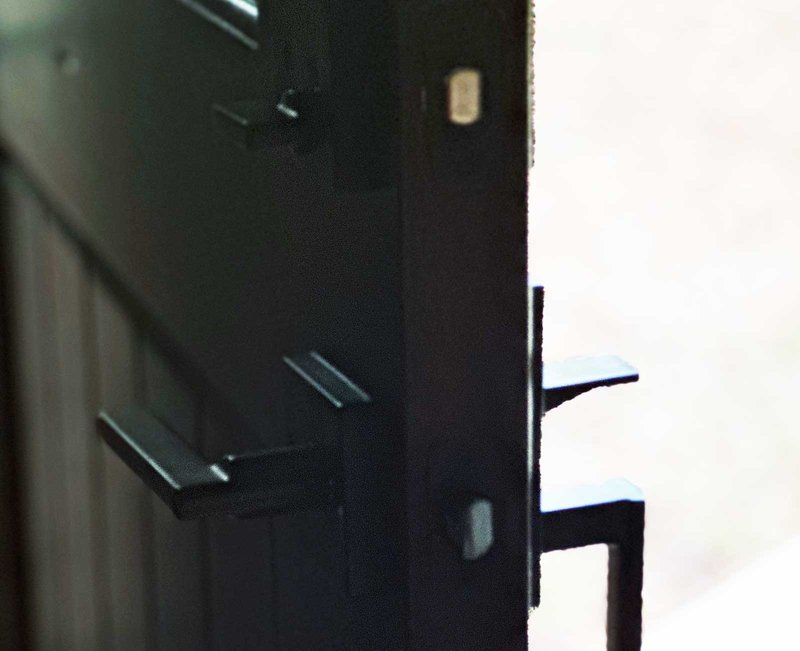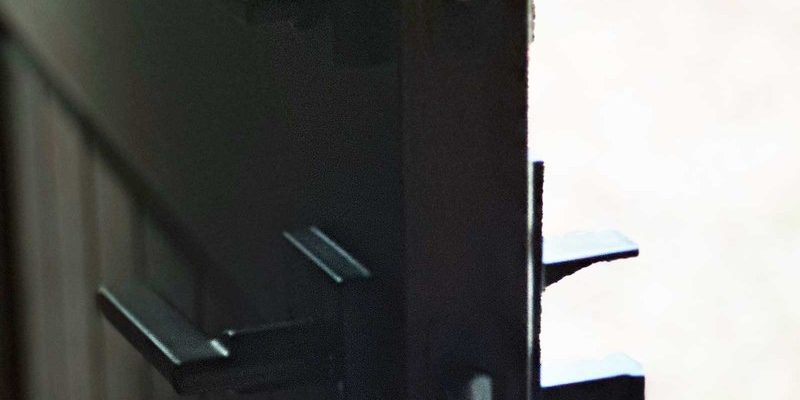
Honestly, exterior doors (like those from brands such as Therma-Tru, Masonite, or even classic wood entries) are tougher than interior ones. They’re built to keep out the weather and stay secure, but all that weight and use, especially if you have kids, pets, or a heavy-duty lock, can eventually knock things out of line. If your door only latches after you lift or push it just right, that’s usually a sign something’s off with the way it hangs or fits in the frame.
Here’s the thing: you don’t need to be a pro to understand what’s going on or how to fix it. A sticky exterior door is almost always a *mechanical* problem, and with a little troubleshooting, you can get it working smoothly again—no more awkward shimmying just to lock up at night.
What Causes an Exterior Door to Need Lifting to Latch?
Let me break it down: when you have to lift your exterior door just to get it to catch or lock, it usually means the door and its latch are out of alignment. Doors are kind of like cars—they need to be lined up just right to work properly. Over time, all sorts of things can throw your door out of sync:
- Hinges wearing out: If the screws loosen or the hinges themselves get tired, the heavy door sinks a little, missing the latch plate.
- Settling or shifting frames: Houses settle. Weather changes. Even a tiny shift in the door frame can throw off the sweet spot where the latch meets the strike plate.
- Warping from weather: That beautiful wood door you love? It expands in humidity and shrinks when it’s dry, which can twist the whole setup.
- Latch or strike plate misalignment: If the holes don’t line up, no amount of slamming will help—your latch can’t find its home.
You might be wondering if slamming the door or forcing the handle will fix it. Honestly, that usually just makes things worse over time. Addressing the root cause, even if it seems minor, helps avoid bigger repairs down the road.
How to Visually Inspect the Door and Hardware
First, grab a flashlight and take a good look—like a detective at a crime scene, but less dramatic. You want to figure out *why* the latch doesn’t line up unless you lift the door. Here’s what to check:
- Hinge screws: Open the door wide. Examine all the screws holding the hinges to the frame and to the door itself. Are any loose? Do the hinges feel wobbly?
- Door reveals: The gaps around the door (called “reveals”) should look even. If you have a bigger gap at the top or bottom corner, the door probably dropped.
- Latching area: Close the door slowly and watch the latch. Does it hit above or below the strike plate hole? If it only lines up when you lift or push, you’ve found your alignment issue.
- Look for damage: Check for visible warping, cracked wood, or bent metal around the lock or hinges.
Let me explain: most exterior doors use a latch mechanism that’s built to “find” the hole in the strike plate. If you see marks where the latch hits the plate—especially if they’re high or low—you’ll know exactly where things are off. This visual code is your first troubleshooting step.
Tightening and Adjusting Door Hinges
If the hinges are the culprits (and honestly, they often are), you can fix a lot of latch problems with just a screwdriver. Here’s how to troubleshoot and reset those hinges:
- Tighten loose screws: Use a manual screwdriver (not a drill—you don’t want to strip the holes) and go one at a time along each hinge. Even a single loose screw can mess up the alignment.
- Check for stripped holes: If a screw just spins, it’s stripped. Pull it out and pack the hole with a wooden toothpick (or golf tee) and glue, then drive the screw back in. It’s a classic trick that really works.
- Hinge replacement: If your hinges are old or bent, swap them with new ones of the same size. Upgrading to heavy-duty replacements (especially on big exterior doors) can make a world of difference.
- Hinge shims: Need a tiny adjustment? Add a thin piece of cardboard behind the hinge leaf to nudge the door up or down. It’s a DIY hack that pros use all the time.
If you’ve tightened and leveled the hinges, try the door again. Often, the need to lift the door will vanish—almost magically. But if not, read on.
Realigning the Strike Plate for a Proper Latch
Sometimes the hinges are fine, but the latch still doesn’t catch unless you lift the door. That usually means the *strike plate*—the metal piece on the frame that receives the latch—needs attention. Here’s what you can do:
- Identify the problem spot: Close the door and watch where the latch hits the strike plate. If it’s too low or too high, that’s your spot.
- Adjust the strike plate: If the misalignment is minor, try loosening the screws and shifting the plate slightly. Then re-tighten and test the latch.
- Enlarge the opening: For stubborn cases, you can carefully file the strike plate hole bigger (usually downward if gravity has dropped the door). Go slowly and test as you work.
- Move the strike plate: For major misalignment, you might need to unscrew the plate and reposition it. Fill in the old screw holes with wood filler and drill new pilot holes for a tight fit.
You might feel nervous about moving hardware, but the truth is, this code-level tweak can instantly reset your door to working order. Just go slow, and don’t overdo it—tiny shifts make a big difference.
What To Do If Your Door Is Warped or Swollen
Here’s where things get tricky. Wood doors are gorgeous, but they’re famous for swelling in wet weather or warping over time. If you notice the door sticking or not latching even after hinge and strike adjustments, this could be the issue. How do you troubleshoot a swollen or warped door?
- Check the weatherstripping: Sometimes what looks like a warped door is really just a problem with puffy or misaligned weatherstripping blocking the latch.
- Seasonal swelling: If the problem only shows up in damp months and improves when it’s dry, your door is probably taking on moisture. Consider using a dehumidifier or running the AC to help dry things out.
- Reseal or sand trouble spots: For persistent sticking, lightly sand the edge where it’s tight, then reseal with paint or clear coat to keep moisture out.
- Severe warping: If your door looks twisted or bowed, you may need to replace it or call in a pro. Warped doors rarely “reset” themselves for good.
Let me be honest: Sometimes, nature wins. If your old wood door keeps going out of sync with every rainstorm, it might be time to upgrade to a more weather-resistant model. Fiberglass or steel doors from trusted brands like Masonite or Therma-Tru handle the seasons better with less maintenance.
When to Adjust the Door Frame or Jamb
You might be thinking, “What if I’ve tried the hardware, and the door still won’t latch without a lift?” That’s a sign the door frame or *jamb* itself may have shifted, especially in older homes. Frames can settle or warp over the years, nudging the door out of alignment.
- Look for frame gaps: Inspect all sides of the door. Are some gaps bigger than others? That’s your clue that the frame has moved.
- Re-shimming the frame: This is more advanced, but sometimes you can tap in new shims behind the hinges or along the frame to nudge everything back in line. Just go slowly—tiny changes go a long way.
- Consider professional help: If the frame is dramatically out of square, you might need a carpenter to reset or rebuild it.
- Temporary fixes: You can sometimes “reset” the latch position as a workaround, but if the frame keeps moving, the problem will likely return.
Frame issues can also lead to problems with weatherproofing and security, so don’t ignore them. Getting your exterior door frame back in spec helps with locking, insulation, and peace of mind.
Lubricating Door Latch and Lock Parts
Sometimes the issue isn’t with alignment or the door itself, but with the *inner workings*—the latch, lock, or handle mechanism. If your latch only works after you wiggle or lift the door, a little maintenance can go a long way.
- Find the right lubricant: Avoid oil-based sprays that attract dust. Use a dry lubricant (like graphite or a silicone-based spray) for the latch and lock parts.
- Apply to latch and strike: With the door open, spray the latch bolt and the strike plate. Work the handle a few times to sync everything up and reset the motion.
- Don’t overdo it: Too much lubricant can gum up the lock over time. A quick spritz is plenty.
- Upgrade old hardware: If your exterior door lock, code-entry keypad, or handle feels gritty or sticks even after lubricating, consider a new set. Sometimes, replacing worn-out parts is easier than troubleshooting every tiny issue.
This bit of maintenance can make even an old door feel brand new—just another example of how a tiny fix, done routinely, can save you a lot of time and hassle.
When to Replace Weatherstripping or Door Seals
Exterior doors rely on weatherstripping and seals for smooth operation and to keep out drafts, bugs, and water. If your door is hard to latch, the culprit might not be the door or lock at all, but the soft stuff around the edges.
- Inspect for damage: Look for torn, flattened, or missing weatherstripping along the top, sides, and bottom of the door.
- Replace worn seals: Most weatherstripping is easy to swap out. Measure the length you need, buy a matching replacement at the hardware store, and stick or nail it into place.
- Choose the right type: There are several styles—foam, rubber, vinyl, or magnetic. Pick one that matches your door brand and fits snugly.
- Test the latch after replacement: Sometimes, new weatherstripping can change the way the door sits in the frame. Make sure it doesn’t add too much pressure and cause new latching problems.
Think of weatherstripping like a shoe’s insole: vital for comfort, but if it’s worn out or poorly fitted, everything else feels wrong. Keeping seals in good shape makes troubleshooting any exterior door much easier.
Final Thoughts: Getting Your Exterior Door to Latch Smoothly
Troubleshooting an exterior door that needs to be lifted to latch is a lot like sleuthing out a stubborn code bug. Honestly, most problems come down to alignment, loose screws, or worn parts—and a patient, step-by-step approach usually solves it. Whether your door is a high-end Therma-Tru, an old wood classic, or a reliable steel entry, checking the hinges, strike plate, frame, and even the seals gives you a reset button for smooth, secure latching. Don’t ignore those little signals—what starts as a minor annoyance today can turn into a real fix-it project if you let it slide.
So, the next time you find yourself lifting your exterior door just to lock up, take a closer look. With a screwdriver, a flashlight, and a little know-how, you’ll have your door latching right—no heavy lifting required.
